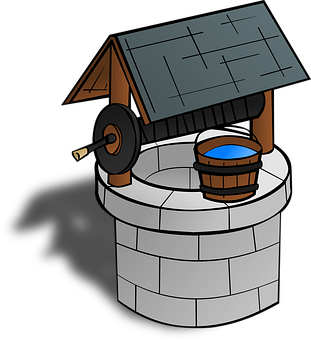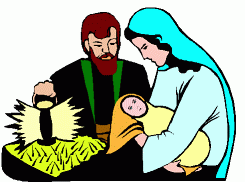lectionary
-
Children's Sermon - A New Year
A Fresh New Year - Children's Sermon / Object lesson
(Church year: Season of Ephiphany - as an alternate to this talk about The Three Wise Men (in progress - check it out)
Children’s Sermon idea: This is an object lesson about starting afresh in the New Year. Show your day timer or notebook from the previous year. Show that it is a little messy and discuss some regrets, mistakes and the fact you didn’t do some things that you believe God wanted you to do. Then show them your brand new day timer or notebook representing the New Year. There is no point in trying to change the past but we have an opportunity to start afreshand write on our planner / calendar the things that God wants us to do for the coming year. Consider getting the kids to suggest some things to put on your “to do” list. (For dramatic effect you could throw you old day timer or notebook in the garbage bin.)--- Another idea: Show some Old items and contrast them with New items you recieved at Christmas. Use this to discuss that we have a brand new year that God has given as a gift to us.(Note: Churches that follow the liturgical calendar will recognize that Advent is the beginning of the church year. However, most kids still recognize this as “the New Year.”)Object lesson props: Old day timer, calendar or notebook and a clean, new day timer, calendar or notebook.
Alternative: If children are very young you could also use a used coloring bookand a new coloring book instead of a calendar.Or....use a dirty blackboard representing last year and clean it off to demonstrate that God has a brand new year full of new excitement.Full Children’s Sermon: Good morning children. I trust you all had a good Christmas. At this time of year you often hear people saying “Merry Christmas.” Sometimes you hear people say “Merry Christmas and a happy _____ _____ ?” That’s right, a Happy New Year. A brand new year started on January 1. This is the new year of 2010. Now is a good time to think about planning to do the things that God wants us to do in this New Year. I want you to look at these two notebooks. This book is the planning book that I used for last year and this is my new planning book. Let’s look at the old one that I used last year. Wow. It’s a bit messy isn’t it? Let’s look through it. (Discuss successes, failures, mistakes and things you didn’t get around to doing.) Now look at this new planning book that I’m going to use for the coming year. (Show them the nice clean pages.) Doesn’t this look nice? Nothing has happened yet so I have the opportunity to start afresh. I can’t change the past but I can plan to do the things that God wants me to do this year. The beginning of the year is a good time to pray and ask God to show you the things he wants you to do in the coming year. There also might be some things you don’t want to do in the coming year. It’s also good to ask God to give you his strength and power to do his will. We can’t do the work of God in our own strength; we need the power of the Holy Spirit to help us. (Consider getting the kids to suggest some good activities and write them into your notebook right there. After you have finished you could throw your old day timer or notebook into the garbage)Children’s Prayer: Dear God, thank you that it is the beginning of a new year. Please forgive us for the things we’ve done wrong in the past year and give us your strength to live for you in the New Year to come. This is the beginning of an exciting new adventure. Thank you that you promise to be with us and guide us every day. In Jesus’ name – Amen!
Copyright Andrew Hewlett - Sundaychildrensfocus.com Feel free to use this on Sunday morning but please give credit to Sundaychildrensfocus.com and consider putting a link to this site. Blessings, Andrew -
Children's story - Woman at the Well
Kids interactive sermon: The Woman at the Well- John 4:5-42 Streams of living water

Children’s sermon idea:We get thirsty and need to keep filling up with water. God’s love / life in Jesus is like refreshing water that never runs out. Pretend to go on a hike and explain how you have to keep filling up your bottle with water when you drink it all and get thirsty. Tell them about the life and love of Jesus that never runs out. Give a short overview of the woman at the well story.Object lesson items: A backpack, water bottle and cup. (Option: a second container to “hold” God’s love)Full interactive lesson:
Good morning children! This morning our bible reading is about a woman at the well who met Jesus and discovered his love. However, before talking about that I want you to join me on a pretend hiking trip. (You could just stand there and explain things but I think it’s more fun to get the kids to join you on a hike around the inside of the church.) Ok. Here is my back pack. One of the most important things inside is this camping cup and this bottle of water. You need water to live and if you are on a long hot hike you need to keep filling up your cup and filling up your bottle of water when it runs out. (Hike around a bit, ask the kids to pretend they are getting really hot and thirsty. Pour them some pretend water to quench their thirst and then keep going. Stress the idea that you need to find a stream or lake to keep filling up the water bottle when you run out.) When you come to a pretend rest spot pull out another container and ask them if they need to keep filling it up with the love and life of Jesus. Well, we don’t really need to keep filling up a bottle with the love and life of Jesus because his love is always with us and it never runs out. We need to keep getting more water when we are thirty but the love of Jesus never runs out. It is always there with us so we can always enjoy his refreshing life. Today’s bible verse is about a woman who met Jesus at a well where thy used to get their water. Jesus introduced himself and said that she could know his life and love. It would be like a wonderful stream of living water that that would make her life refreshing, full and complete. It would be like a stream of love and life that would never run out.Children’s prayer: Dear God, thank you that Jesus’ life and love never run out. It’s like an invisible living water this is always there for us. In Jesus’ name – Amen!Copyright 2014 Feel free to use this story at you morning worship service. Please consider putting a link on your church web site. Blessings, A.H.

-
Parable of the two sons - and the vineyard
The parable of the two sons and the vineyard - Matthew 21:23-32 Self-righteousness, Obedience and the importance of recognizing our need for Jesus.
Give the kids some background to the Parable:
Start by introducing the parable of the 2 sons and its context (Matthew 21:23-32). Discuss the characters and the vineyard setting. Ask the kids why they think Jesus used parables to teach important lessons.
Consider using use props, visual aids, or even act out the story with the help of the students. Make sure to emphasize the contrast between the two sons' actions.
Discuss Obedience and Repentance:
After telling the parable, lead a discussion about the behavior of the two sons. Here’s some ideas:
Why did the first son initially refuse to obey but later changed his mind?
Why did the second son agree to obey but didn't follow through?
What do these actions teach us about repentance and obedience?
Note: Highlight the idea that people who think they are righteous and have it all together don’t need God or his forgiveness. It is those who know they are broken and in need that reach out to Jesus for forgiveness and healing.
Try Role-Playing:
(for some of the more mature children) Divide the kids into small groups and assign each group one of the two sons. Ask them to create short skits or role-plays that illustrate the actions and attitudes of their assigned son. Encourage them to reflect on the importance of both initial intentions and follow-through.
Application of the Parable:
Discuss how this parable relates to our own lives at home, at church or at school. Talk about situations where we might say we will do something but don't follow through, and vice versa. Encourage students to think about how they can be more obedient and repentant in their daily lives.
Bible Journaling and Art:
Provide art supplies and encourage students to create journal entries or artwork that represents the parable's message. This creative exercise can help them internalize the lesson in a personal way.
Challenge them to memorize key verses in this passage:
Choose a key verse from this passage (e.g., Matthew 21:31b) and have the students memorize it. Discuss the verse's meaning and how it ties into the parable.
Craft Activity:
Create a simple craft activity where the children ccan make "repentance and obedience reminder cards" to take home. These cards can feature key verses or a brief summary of the parable.
Guest Speaker or Testimony from someone in the congregation (use a teen or someone they look up to:
Invite a guest speaker or share a personal testimony of someone who experienced a transformation through repentance and faith. This real-life example can emphasize the power of God's grace.
Final Closing Prayer and Reflection:
Conclude the lesson with a prayer, asking for God's guidance in living a life of true repentance and obedience. Encourage the kids to reflect on what they've learned and how they can apply it during the upcoming week.
